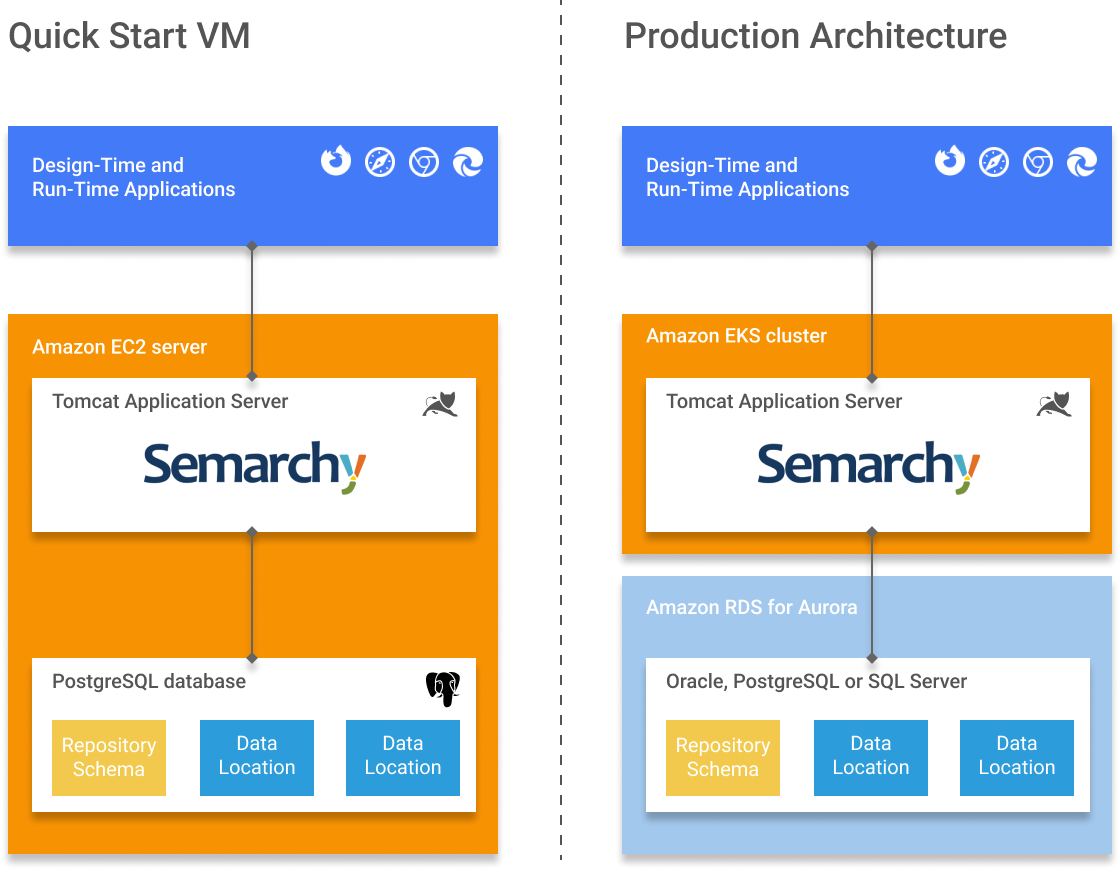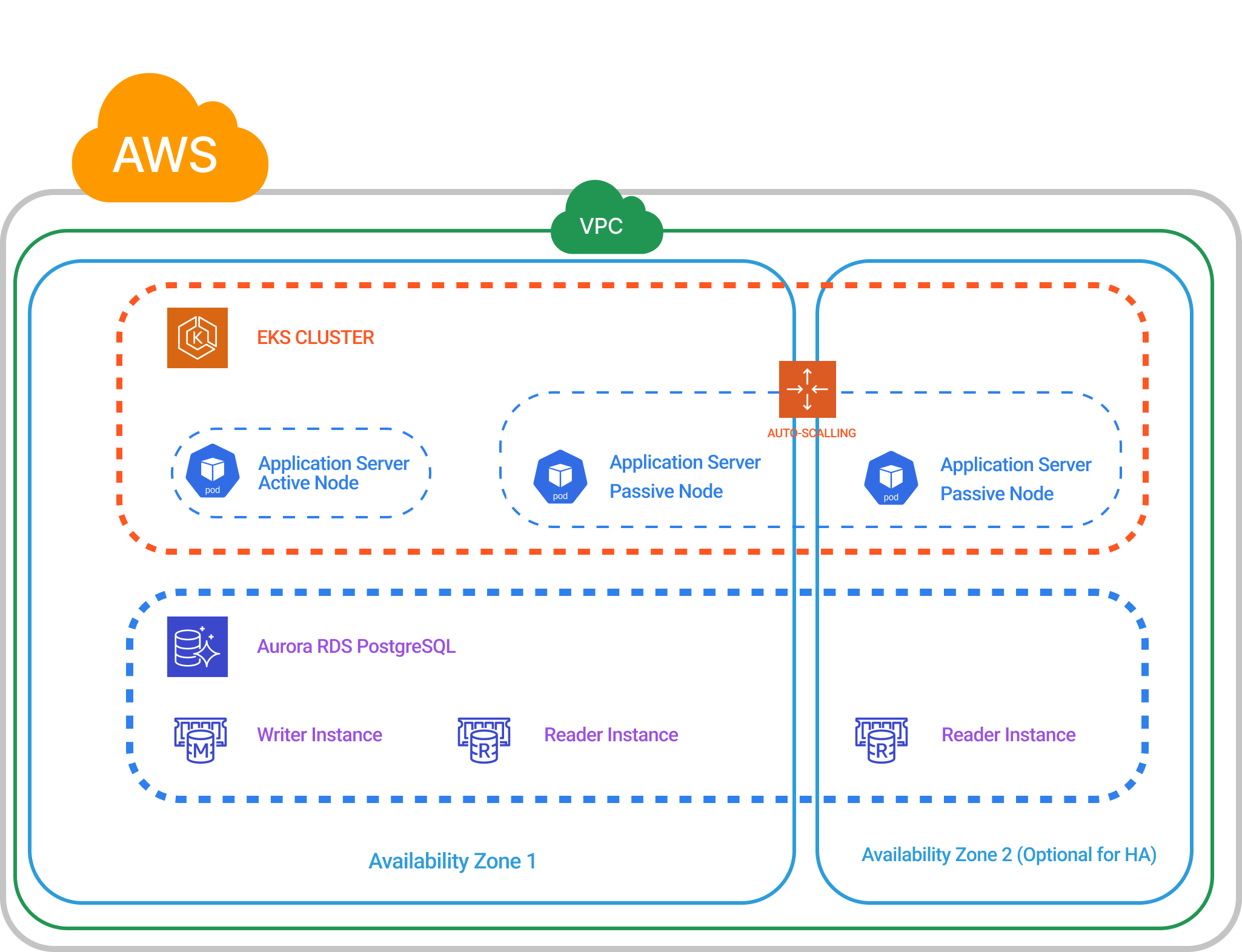| This is documentation for Semarchy xDM 2023.4, which is no longer supported. For more information, see our Global Support and Maintenance Policy. |
Install Semarchy xDM on Amazon Web Services
Introduction
You can deploy Semarchy xDM in Amazon Web Services (AWS) to move your data hub to the cloud and scale your deployment as the needs of your data management initiative grow.
There are two options available on AWS:
-
The Semarchy xDM QuickStart VM: an Amazon Machine Image (AMI) deploys a single virtual machine containing an application server and a database for evaluation or development purposes. For more information, see the Install Semarchy xDM on AWS tutorial.
-
The Semarchy xDM Production Deployment: set up and manage a production-ready infrastructure with high availability and performance using AWS.

The following sections describe how to:
-
Plan the configuration of Semarchy xDM for production environments in AWS.
-
Deploy Semarchy xDM on Amazon Elastic Kubernetes Service (EKS).
-
Start and connect to Semarchy xDM installed in AWS.
Production deployment
The Semarchy xDM Production Deployment describes how to set up and manage a complete infrastructure suitable for production.
Prerequisites and requirements
Review the information in this section before you begin the installation.
You will need the following to install Semarchy xDM on AWS:
-
An AWS subscription. If you don’t have an AWS subscription, create a free account before you begin. This user requires administrator privileges.
-
The AWS command-line interface (CLI). It is installed and configured with your AWS account. For more information, see Getting started with the AWS CLI.
-
One AWS Virtual Private Cloud (VPC). It is configured with at least two subnets from different availability zones. For more information, see Create an IPv4-enabled VPC and subnets using the AWS CLI.
-
The Amazon EKS Client (eksctl). It is installed and configured with your AWS account. This tool allows you to create and manage clusters on EKS. For more information, see the eksctl documentation.
-
The Kubernetes command-line tool (kubectl). This tool is installed and allows you to run commands against Kubernetes clusters. For more information, see Install Tools.
Architecture

The minimal architecture is composed of:
-
One EKS cluster based on three t3a.large EC2 instance. For more information, see Amazon EKS pricing.
-
One Aurora PostgreSQL managed cluster with two instances (db.t4g.medium). For more information, see Amazon Aurora Pricing.
The proposed architecture is a reference architecture with minimal resources to match Semarchy xDM system requirements. It may not be suitable for all cases and may have to be adapted according to the technical and security needs of your implementation in your information system.
While implementing this architecture, you may encounter AWS service limits or quotas. For more information on requesting a service quota increase, see AWS service quotas.